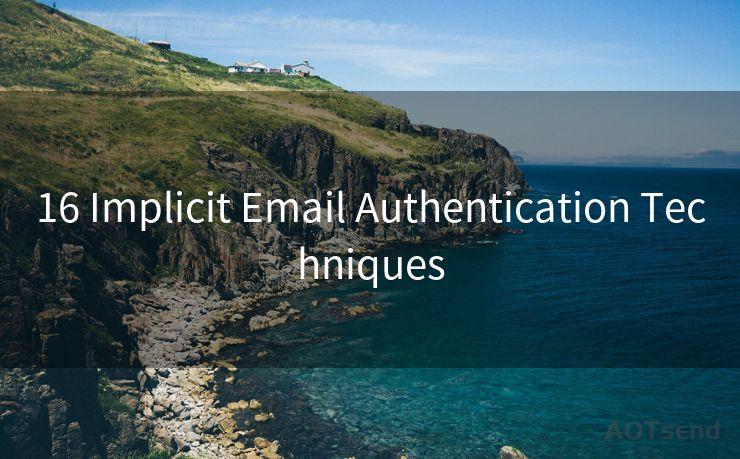16 Implicit Email Authentication Techniques




Email authentication is crucial in today's digital world, where cyber threats are constantly evolving. Implicit email authentication techniques provide an additional layer of security, often without the need for explicit user action. In this article, we explore 16 such techniques that enhance email security and protect against spoofing, phishing, and other malicious activities.
1. SPF (Sender Policy Framework)
SPF is an email authentication method that verifies the sender's IP address against a list of authorized sending hosts. It helps prevent email spoofing by ensuring that emails originate from legitimate sources.

2. DKIM (DomainKeys Identified Mail)
DKIM uses cryptographic signatures to validate the authenticity and integrity of an email message. It ensures that the email hasn't been tampered with during transit.
3. DMARC (Domain-based Message Authentication, Reporting, and Conformance)
DMARC builds upon SPF and DKIM, providing a policy framework for handling unauthenticated emails. It allows domain owners to specify how unauthenticated emails should be handled.
4. TLS (Transport Layer Security)
TLS encrypts email communications, ensuring that emails are transmitted securely and cannot be intercepted or tampered with.
5. Secure MIME (S/MIME)
S/MIME provides end-to-end encryption and digital signatures for email messages, ensuring both the privacy and authenticity of communications.
6. DNSSEC (DNS Security Extensions)
DNSSEC adds a layer of security to the Domain Name System, preventing DNS spoofing and ensuring that email destinations are legitimate.
7. Multi-Factor Authentication
Adding multi-factor authentication to email accounts provides an extra layer of security, requiring additional verification methods beyond just a password.
8. Email Encryption Gateways
These gateways encrypt emails at the network perimeter, ensuring that sensitive data remains protected even when transmitted over unsecured networks.
9. Bayesian Filtering
While not directly an authentication technique, Bayesian filtering helps identify and filter out spam emails, reducing the risk of phishing attacks.
10. Greylisting
Greylisting temporarily rejects email from unknown senders, forcing them to retry later. This helps filter out spam and automated attacks.
11. IPReputation Filtering
This technique evaluates the reputation of the sending IP address, blocking emails from known malicious or spam-sending IPs.
12. Reverse DNS Lookup
A reverse DNS lookup verifies the legitimacy of the sending server by checking if its IP address resolves to a valid domain name.
13. Header Analysis
🔔🔔🔔
【AOTsend Email API】:AOTsend is a Managed Email Service for sending transactional emails. Support Email Types: reminders, authentication, confirmations, notifications, verification codes, invoices, password resets, account activations, billing statements, two-factor authentication (2FA), and one-time passwords (OTP) emails, etc. $0.28 per 1000 Emails. 99% Delivery, 98% Inbox Rate.
You might be interested in:
Why did we start the AOTsend project, Brand Story?
What is a Managed Email API, How it Works?
Best 25+ Email Marketing Platforms (Authority,Keywords&Traffic Comparison)
Best 24+ Email Marketing Service (Price, Pros&Cons Comparison)
Email APIs vs SMTP: How they Works, Any Difference?
Examining email headers can reveal inconsistencies or suspicious patterns, helping to identify spoofed or forged emails.
14. Attachment Scanning
Scanning email attachments for malicious content helps prevent malware and ransomware attacks that often arrive via email.
15. User Education and Awareness
While not a technical solution, educating users on email security best practices is crucial in preventing phishing and other social engineering attacks.
16. Regular Security Updates and Patching
Keeping email systems up to date with the latest security patches and updates is essential for maintaining a robust defense against evolving threats.
In conclusion, these 16 implicit email authentication techniques provide a comprehensive approach to enhancing email security. By combining multiple layers of protection, organizations can significantly reduce the risk of email-based attacks and protect sensitive information.




Scan the QR code to access on your mobile device.
Copyright notice: This article is published by AotSend. Reproduction requires attribution.
Article Link:https://www.mailwot.com/p3060.html



